This is a relatively short walk of around two miles, but it includes some spectacular scenery. Hollerday Hill in Lynton is 750 feet in height, and its proximity to the coast provides views of the island of Lundy. On clear days the coastline of Wales is also visible across the Bristol Channel. The walk begins at the Town Hall, an attractive building financed by Sir George Newnes, a publisher, responsible for the magazine, “Titbits”. Newnes took a considerable interest in the area, financing the cliff railway, built in 1890, at a cost of £8,000, and he played a major part in the building of the narrow gauge railway from Barnstaple to Lynton, which opened in 1898 and closed in 1935.
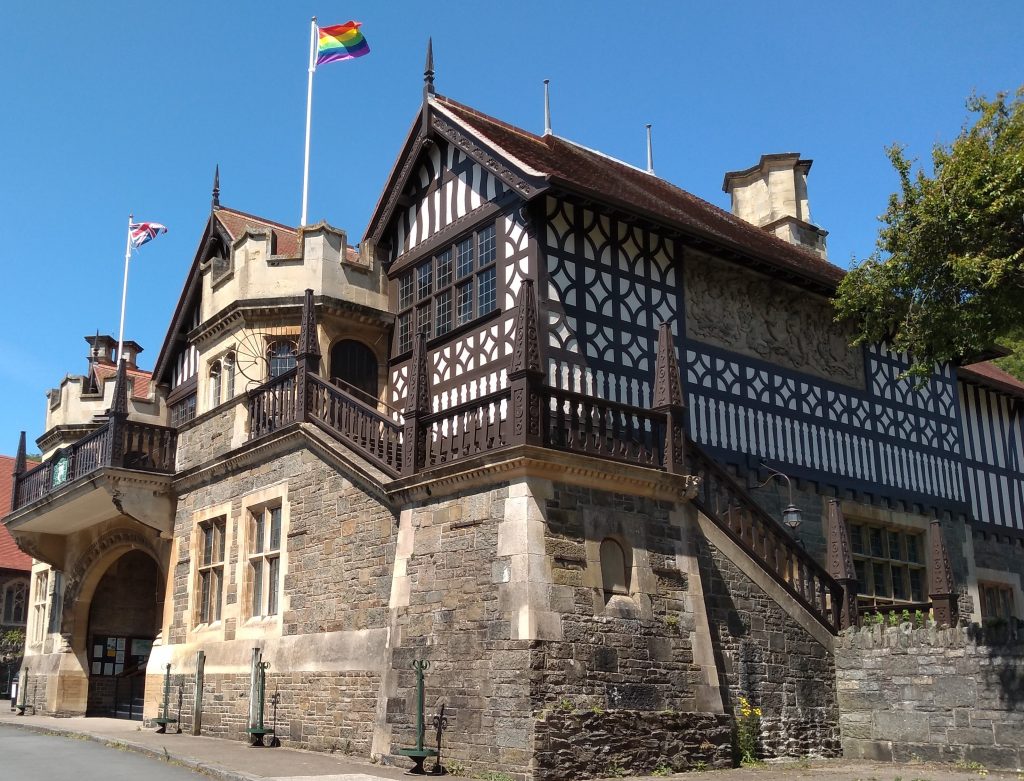
To begin the walk go up the lane alongside the Town Hall. Turn left up the hill and follow the tarmac path.
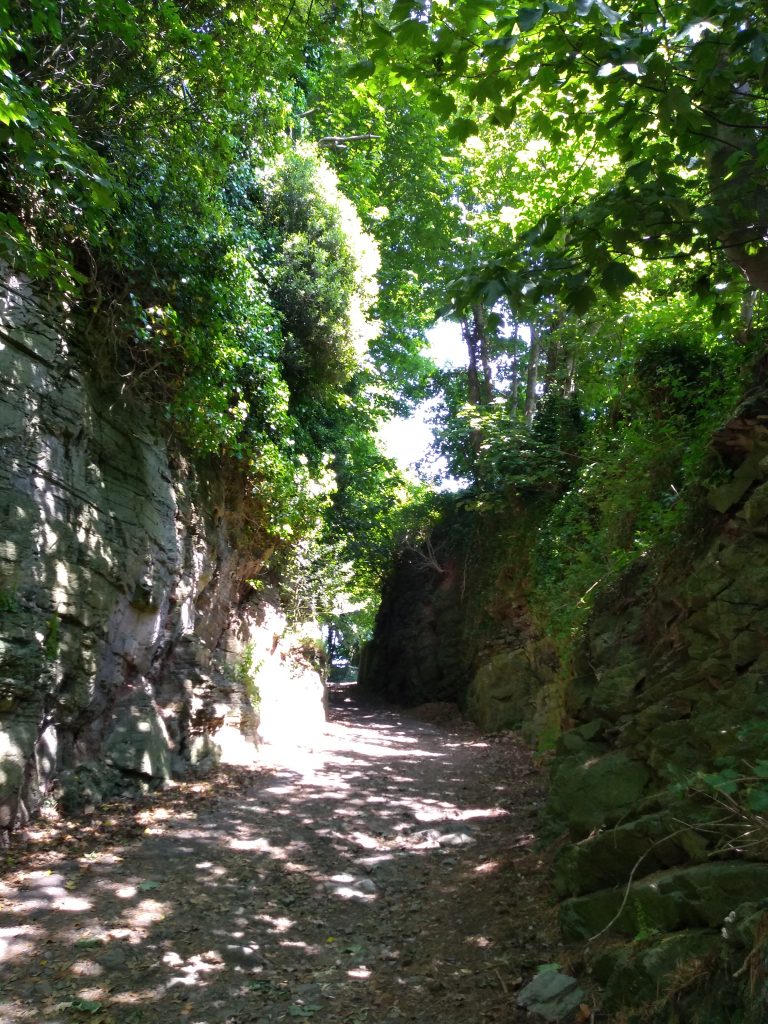
This is the shady lane that will take you up the hill and towards Honeypot Cottage.
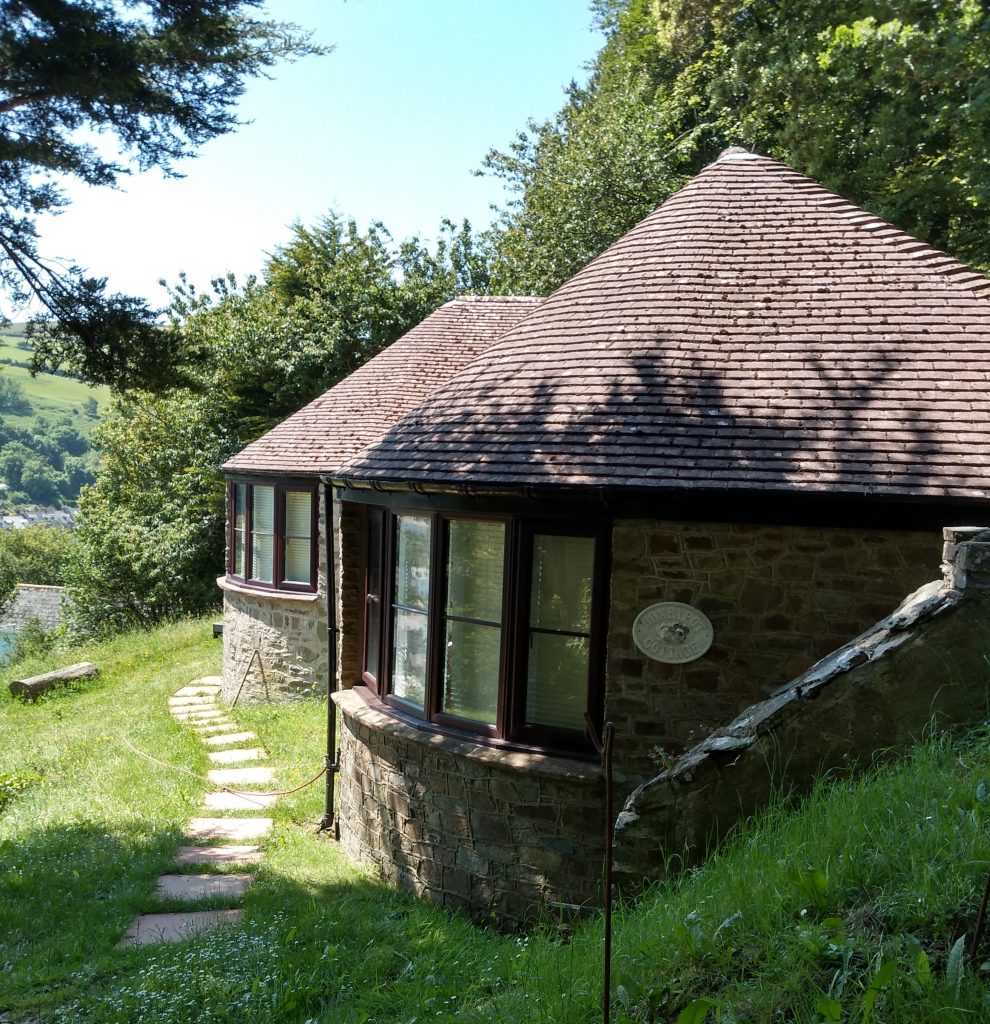
This pretty little cottage is aptly named and was once an estate worker’s cottage, but is now a holiday let.
Halfway up Hollerday Hill, Sir George Newnes built himself a large and imposing mansion. The grounds were laid out with carriage drives, walks, and tennis courts, and signs of these can still be seen. However, the house burnt down in 1913, shortly after the death of its owner.
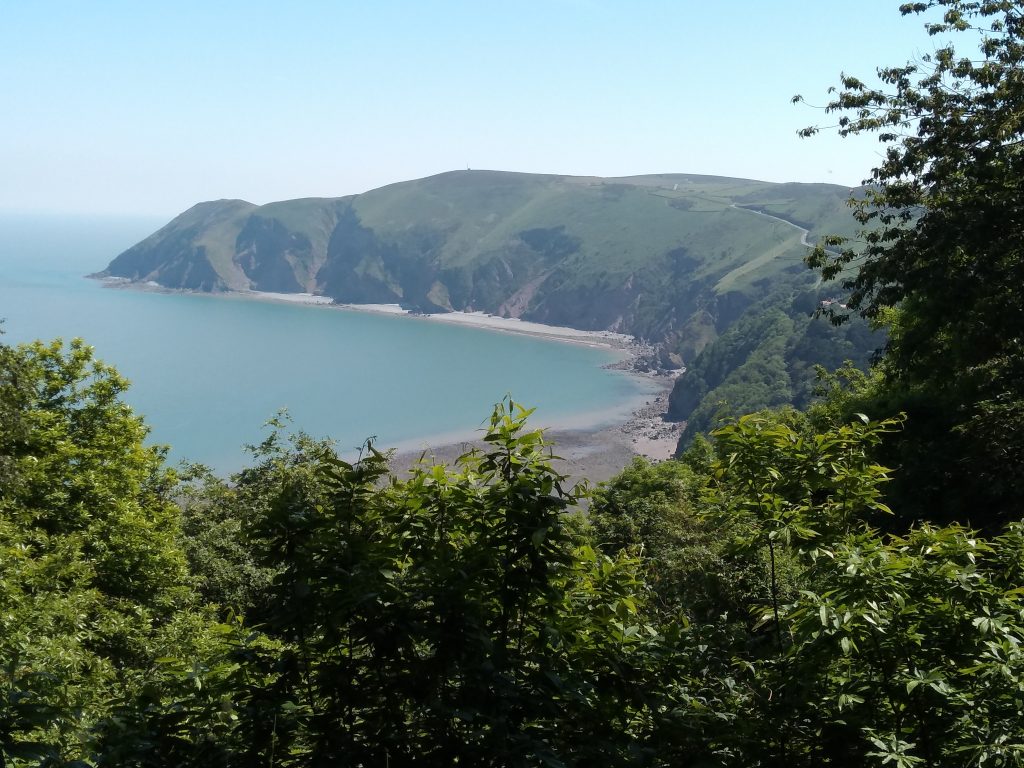
There are lovely views of the coastline below.
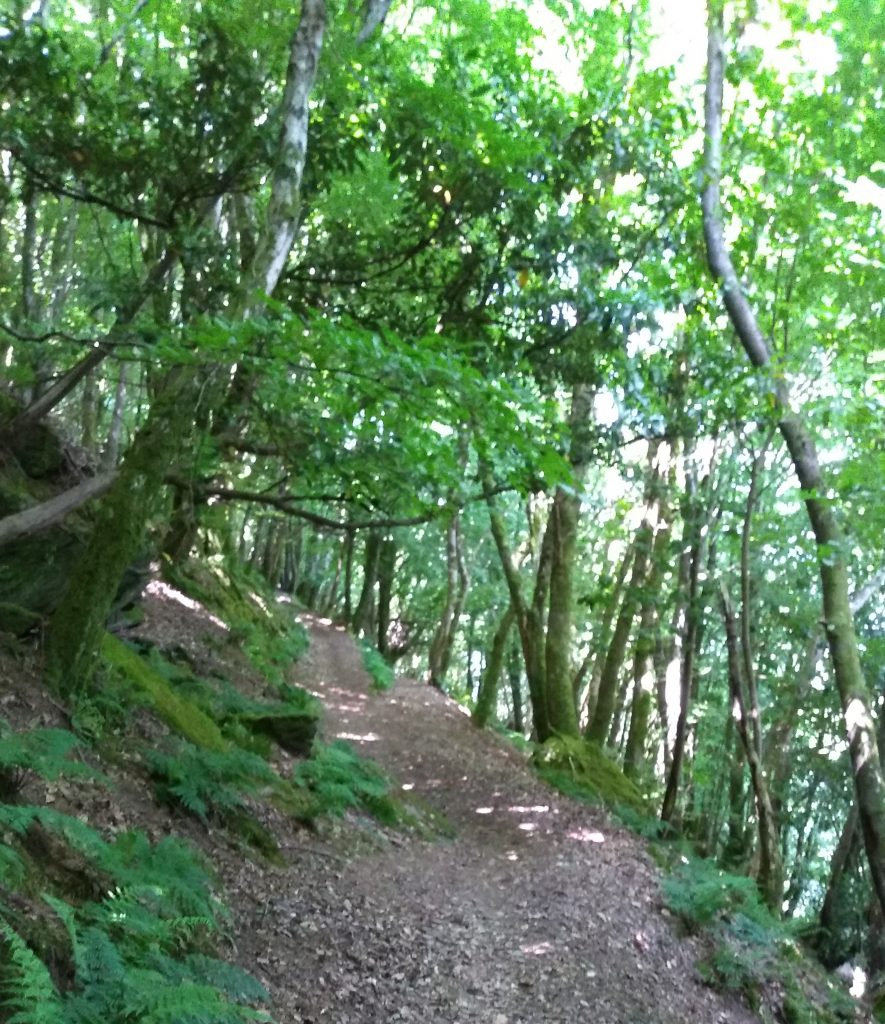
There are several different paths to choose from. One leads to the top of the hill, and the remains of an iron age fort, (though we have never found any trace of it) and on to the Valley of the Rocks. However, we chose a path on our left that led us through the woods.
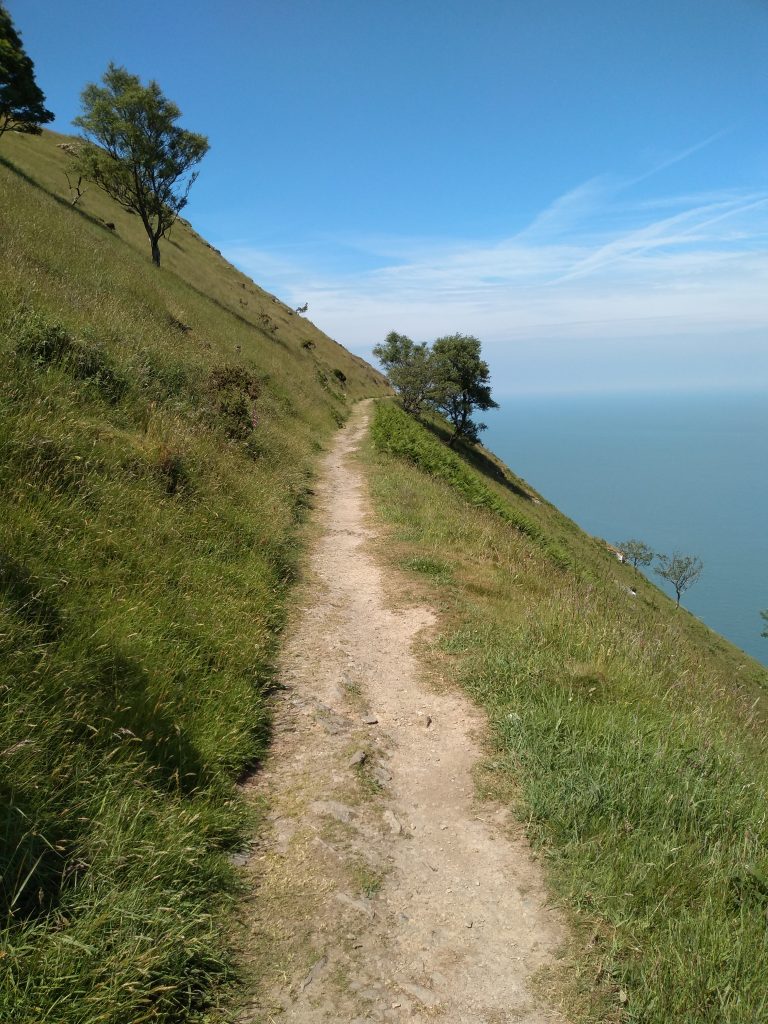
We had not followed this path before and it led to a narrow path around the hill. This path was not for the faint-hearted, as there was a sheer drop into the sea on our right. Fortunately, we did not meet anyone coming the other way!

The path eventually joined the one we recognised from our previous walk to the iron age fort and brought us out at the top of the Valley of the Rocks. This has to be one of the most magnificent views in Devon, especially on a lovely sunny day. Beyond the cricket ground, in the valley below, was the cafe where we had promised ourselves some lunch.
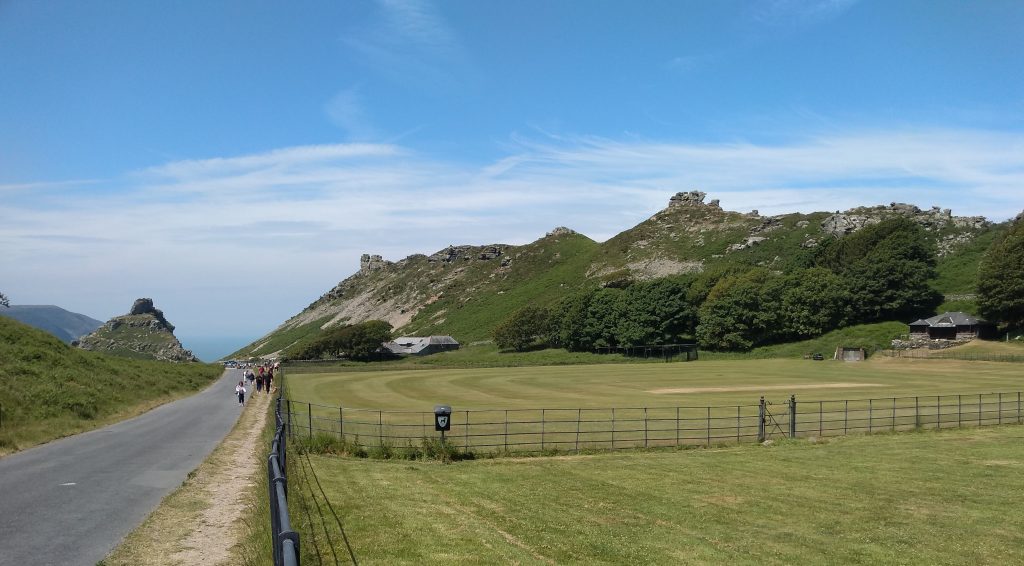
Having descended into the valley, we walked along the road to the cafe, where we enjoyed a bacon bap each.
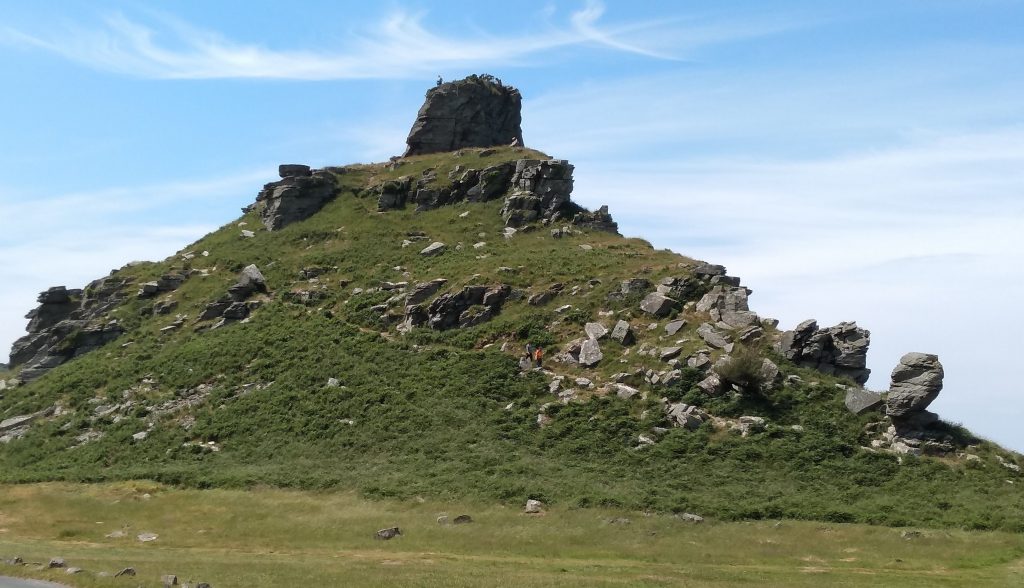
This is part of the Valley of the Rocks and, as you can see, some people had made it to the top. However, we decided we had climbed enough hills for one day and gave this a miss.
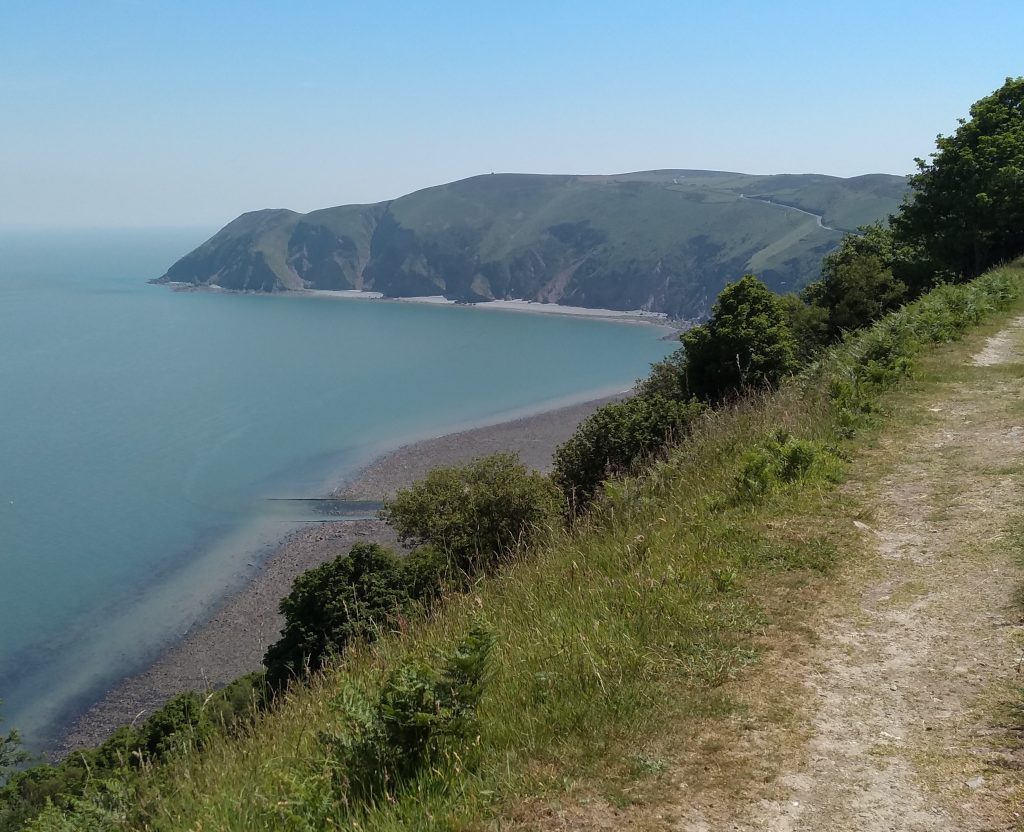
Leaving the cafe it is possible to turn left and walk back to Lynton along the road. However, we turned right, and made our way out to the cliff path, and walked back to the town this way as it offers lovely views of the coastline all the way. This path is wider than the previous one, though it still requires care. On the way, we saw several goats, some in ridiculously precarious positions, but they were completely at home in their surroundings.
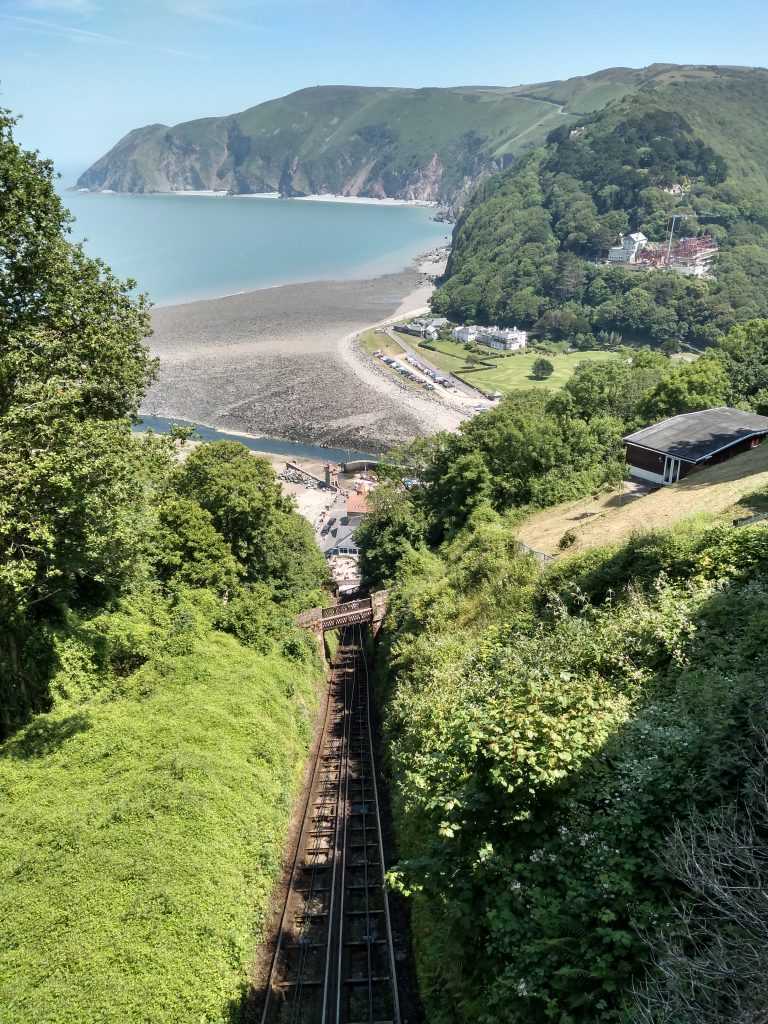
The path eventually brings you to a road that goes across the cliff railway.
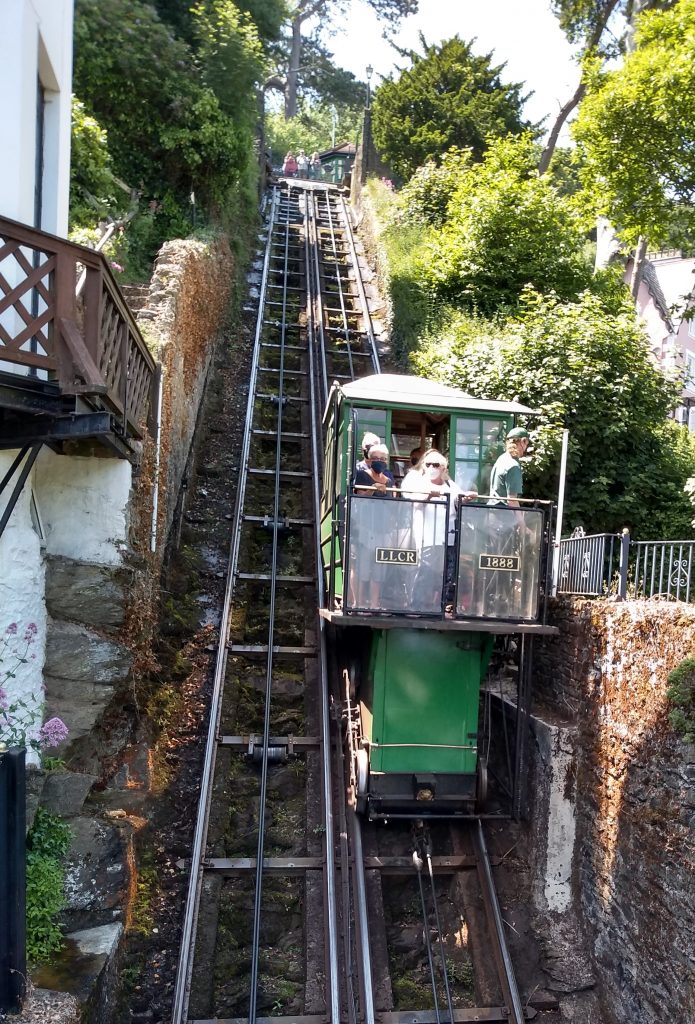
The famous funicular Cliff Railway opened in 1890 and is the highest, and the steepest, totally water-powered railway in the world. It connects the twin towns of Lynton and Lynmouth and is Grade II listed.
The path eventually brings you into the main street in Lynton. Turn right to return to the Town Hall.
0 Comments